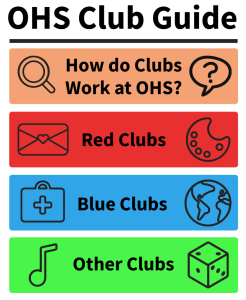Allergies Bloom With Early Spring
April 14, 2015
As spring begins, so do allergies. Many students and faculty around Orono High School (OHS) have allergies and struggle to keep them away. In fact, there are just a few people who know what to do when allergies get in the way of everyday life.
“I’ve had allergies ever since I was little, and I have tried a lot of things to deal with them,” senior Will Dittrich said.
A huge part of the OHS community have seasonal allergies, and some have regular allergies as well. Dittrich shared that he has over 20 different allergies, including but not limited to: dogs, cats, horses, grass, dust, pollen, Benadryl, other various medicines including children’s Nyquil which he claims causes him to hallucinate, trees, some bugs, and much more.
“The first time I found out I was allergic to something was when I was three years old. My family and I were dog sledding and then one of the dogs came up to me and licked my face. Within about ten minutes my face started to swell up. It was also hard for me to breathe,” Dittrich said.
Students with allergies can learn from the things other students try such as taking an allergy pill such as Allegra, Claritin, Benadryl, etc. Some students have also tried some home remedies including tea, honey, taking a hot shower, drinking a glass of vinegar, and more.
“I first found out I had a peanut allergy when I was younger. I got hives on my face and it was very hard to breathe,” junior Julia McNaughton said.
Peanut allergies are one of the most common allergies across the world. About 90 percent of food allergies are caused by some type of nut including peanuts, cashews, tree nuts, etc. About 0.6-1.0 percent of people have a peanut allergy which can vary from mild to severe, according to The Peanut Institute.
“Even though I have not had a reaction for a long time I still carry an epipen with me at all times just in case,” McNaughton said.
Many people also have allergies to animals, especially things that shed fur. Ten percent of people are allergic to a common household pet. Although, cat allergies are almost two times more common than dog allergies. One in seven between the ages of 6-19 prove to be allergic to cats, according to Livescience.
“I am allergic to both cats and dogs, although my family still has a dog. I don’t have much of a reaction to my dog Baxter because he does not shed. My cat allergies are worse than my dog allergies,” freshmen Ben Kill said.
The top five most common allergens are pollen, being number one, grass, dust mites, mold, and weeds, being number five, according to Livescience.
A lot of these allergies are connected with seasonal allergies especially in the spring and fall. 55 percent of people in the U.S have one or more allergies including seasonal allergies, according to WebMD.
Although allergies are a major problem for most, and are starting to sprout up in the spring time, students and faculty try their best to deal with it and not let it hinder their everyday life.

Flowers and pollen bloom at Otten Bros. in Long Lake.





























































